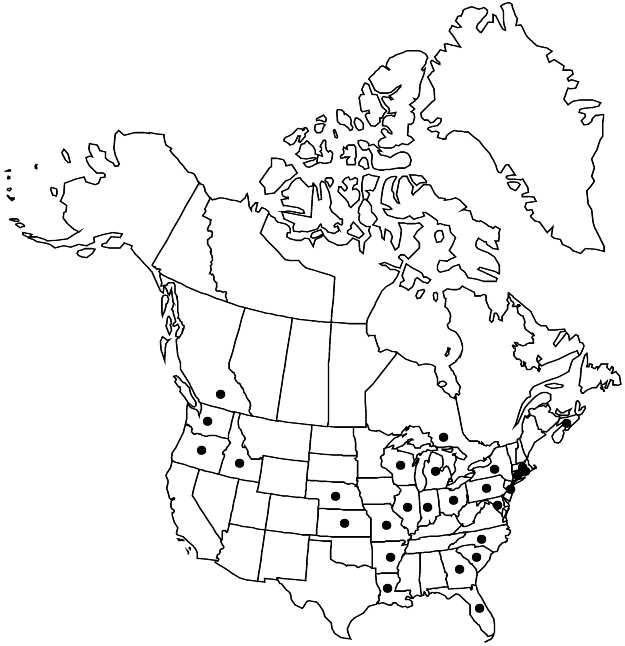Difference between revisions of "Cerastium semidecandrum"
Sp. Pl. 1: 438. 1753.
FNA>Volume Importer |
imported>Volume Importer |
||
| (6 intermediate revisions by 2 users not shown) | |||
| Line 8: | Line 8: | ||
}} | }} | ||
|common_names=Five-stamen mouse-ear chickweed | |common_names=Five-stamen mouse-ear chickweed | ||
| + | |special_status={{Treatment/ID/Special_status | ||
| + | |code=I | ||
| + | |label=Introduced | ||
| + | }} | ||
|basionyms= | |basionyms= | ||
|synonyms= | |synonyms= | ||
| Line 24: | Line 28: | ||
|elevation=0-300 m | |elevation=0-300 m | ||
|distribution=B.C.;N.S.;Ont.;Ark.;Conn.;Fla.;Ga.;Idaho;Ill.;Ind.;Kans.;La.;Md.;Mass.;Mich.;Mo.;Nebr.;N.J.;N.Y.;N.C.;Ohio;Oreg.;Pa.;R.I.;S.C.;Wash.;Wis.;Eurasia. | |distribution=B.C.;N.S.;Ont.;Ark.;Conn.;Fla.;Ga.;Idaho;Ill.;Ind.;Kans.;La.;Md.;Mass.;Mich.;Mo.;Nebr.;N.J.;N.Y.;N.C.;Ohio;Oreg.;Pa.;R.I.;S.C.;Wash.;Wis.;Eurasia. | ||
| + | |introduced=true | ||
|discussion=<p>The very broad, scarious margins of the sepals and bracts distinguish this small, ephemeral species.</p> | |discussion=<p>The very broad, scarious margins of the sepals and bracts distinguish this small, ephemeral species.</p> | ||
|tables= | |tables= | ||
| Line 33: | Line 38: | ||
-->{{#Taxon: | -->{{#Taxon: | ||
name=Cerastium semidecandrum | name=Cerastium semidecandrum | ||
| − | |||
|authority=Linnaeus | |authority=Linnaeus | ||
|rank=species | |rank=species | ||
| Line 48: | Line 52: | ||
|publication title=Sp. Pl. | |publication title=Sp. Pl. | ||
|publication year=1753 | |publication year=1753 | ||
| − | |special status= | + | |special status=Introduced |
| − | |source xml=https:// | + | |source xml=https://bitbucket.org/aafc-mbb/fna-data-curation/src/2e0870ddd59836b60bcf96646a41e87ea5a5943a/coarse_grained_fna_xml/V5/V5_186.xml |
|subfamily=Caryophyllaceae subfam. Alsinoideae | |subfamily=Caryophyllaceae subfam. Alsinoideae | ||
|genus=Cerastium | |genus=Cerastium | ||
Latest revision as of 23:09, 5 November 2020
Plants annual, with slender taproot. Stems erect or ascending, branching at base, 1–20 cm, viscid, covered with short, dense, glandular and eglandular hairs; short axillary tufts of leaves absent. Leaves not marcescent, sessile but proximal leaves often spatulate; blade 5–18 × 2–5 mm, covered with short, white hairs; basal leaves with blade narrowly oblanceolate and ± spatulate, apex obtuse; cauline with blades ovate to elliptic-oblong, apex obtuse to acute. Inflorescences open, 3–30-flowered cymes; bracts lanceolate, with broad, scarious margins, glandular-pubescent. Pedicels curved at apex, often sharply angled at base, 3–8(–12) mm, 1–3 times as long as capsule, densely glandular-pubescent and viscid. Flowers: sepals narrowly lanceolate, 3–5 mm, margins broad, apex acute, glandular-pubescent; petals with unbranched veins, oblanceolate, 2–3 mm, shorter than sepals, apex notched; stamens 5; styles 5. Capsules cylindric, slightly curved, 4.5–6.5 mm, 1.5–2 times as long as sepals; teeth 10, erect, margins convolute. Seeds pale yellowish brown, 0.4–0.6 mm, finely tuberculate; testa not inflated. 2n = 36.
Phenology: Flowering spring.
Habitat: Common weed in dry, sandy, and gravelly places, roadsides and footpaths, parking lots, dunes
Elevation: 0-300 m
Distribution

Introduced; B.C., N.S., Ont., Ark., Conn., Fla., Ga., Idaho, Ill., Ind., Kans., La., Md., Mass., Mich., Mo., Nebr., N.J., N.Y., N.C., Ohio, Oreg., Pa., R.I., S.C., Wash., Wis., Eurasia.
Discussion
The very broad, scarious margins of the sepals and bracts distinguish this small, ephemeral species.
Selected References
None.